
Inspector Arnold looks into the strange circumstances of the murder of Rufus Jones, a realtor who disappears for several days. Eventually, his body is found in a storage building on one of the available properties. Jones’s automobile is found abandoned on farmland away from the building where his body was discovered, but the car’s interior appears to have been the scene of a mighty struggle. Arnold strongly suspects Tom White, Jones’s cousin and business partner, who has motive and opportunity for dispatching his relative.
And then, starting in Chapter 10, we leave the inspector to his suspicion and his procedure and instead board The Ballerina, a commercial freighter that also accepts a limited number of tourist passengers to accompany the crew on their business voyage. Desmond Merrion and his wife Mavis find themselves well suited to the unfussy arrangements, and plan to travel for six weeks while High Eldersham Hall undergoes renovations. Dozens of pages go by with no apparent mystery in sight, although the reader knows enough to keep an eye on Mr. Jasper Wilberton, an outspoken older man who has his nephew, Horace Bewdley, in tow. What we know that Merrion does not is that Mr. Wilberton had called on H. Jones and Son Estate Agents the day that Rufus Jones went missing.
The mystery story connecting the two sections is interesting but not exceptional, and as sometimes happens in the Miles Burton books, two things occur: poor Inspector Arnold becomes focused on a single, incorrect suspect and finds it hard to look past him; and the reader is denied an important piece of information (here, the relationship between killer and victim and the motive for murder) until it is revealed near the end of the book. Somehow, such withholding of details, which muddies the fair-play waters, never really frustrates me when I read a mystery story by the prolific Cecil John Charles Street. I think it is because Street always practices forthright, clear-eyed procedural storytelling, and that style is compulsively readable even if it lacks surprise or filigree. (There is a reason why he is identified as a writer belonging to the “humdrum” school of detective fiction.)
But the mystery plot is not the most memorable and, yes, surprising part of Murder in Absence. That honor goes to the author’s detailed and affectionate evocation of the Merrions’ cruise experience aboard that Greece-bound freighter. Street doesn’t merely offer up general details; rather, there are dozens of observations about life aboard a working cargo ship for both passengers and crew that the author delivers with a reporter-like authenticity.
The specifics are quirky and fascinating and must surely have been collected from real life. Merrion’s mischievous tricking of a Norwegian waiter into believing the ship is three miles out from shore so drinks can be ordered; the pulley system used – and the accompanying clamor – when cargo is swung from the dock to the loading bay; even the descriptions of the rocky Greek islands and the novelty of the on-ship smorgasbord are presented with a knowing, experiential touch. I found these passages a delight, largely because it felt like Street was taking pleasure to share his own recent adventures. In his biography and genre study Masters of the “Humdrum” Mystery, scholar Curtis Evans writes that Murder in Absence “draws on the peripatetic John and Eileen Street’s practical knowledge of realtors and freighters to provide a convincing and original Miles Burton tale”. Such well-observed specifics definitely make Absence one of Street’s most evocative stories, and an enjoyable one at that.
The late-period Miles Burton editions are quite difficult to find. While the books Street wrote in the 1950s under his John Rhode pseudonym saw print in both Great Britain and the United States, the Burton stories were only published through the Collins Crime Club in the UK. I am grateful, then, for the wonderful library collective over at Internet Archive, which allows free digital lending of hundreds of mystery and crime books that might otherwise prove challenging and cost prohibitive to track down and read. The information page tells me that the Archive’s full-text scan of Murder in Absence was added in August, and such active curating is very exciting indeed.
Perhaps predictably, Internet Archive now must defend the legality of its online book loan practice in a lawsuit brought by four litigious, notably for-profit publishing companies. As the website claims to own a copy of every digitized book and has a clear electronic lending policy – upon checkout, users get access to the text for a limited time and never own a downloaded or printable copy during or after use – I don’t see how the Archive’s program differs from other e-lenders like Hoopla and OverDrive or from the beloved patron borrow-and-return traditions of our brick-and-mortar libraries. Until Internet Archive can no longer offer this wonderful service (and I hope that day never comes), I am excited to fully explore its growing online catalog of crime and mystery novels from previous eras.
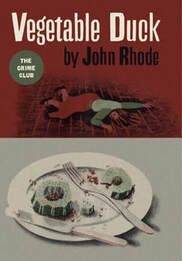
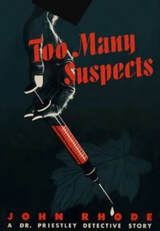
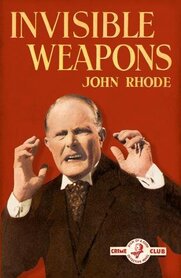
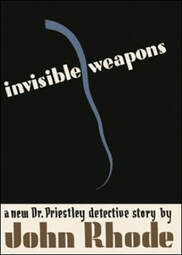
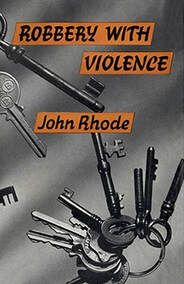
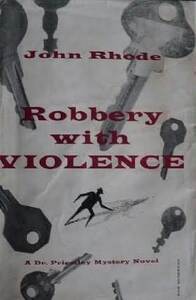
 RSS Feed
RSS Feed